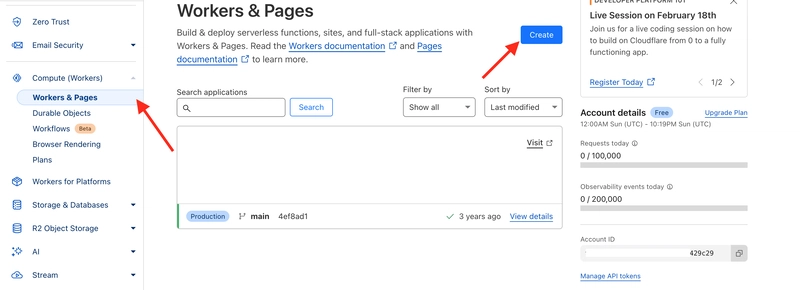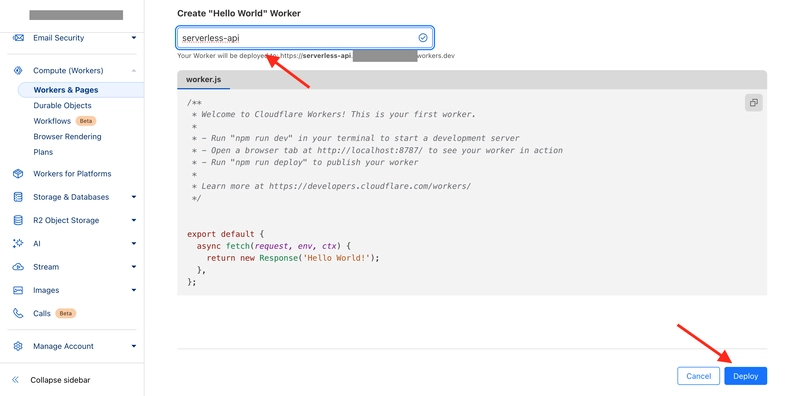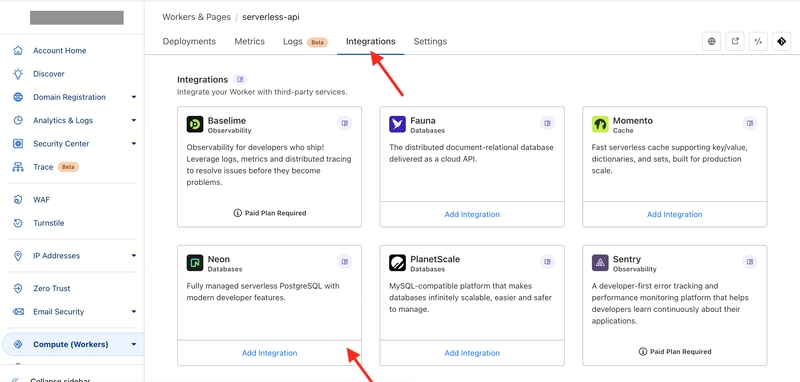Get Started with Serverless Architectures: Top Tools You Need to Know
Managing the infrastructure to host and execute backend code requires you to size, provision, and scale several servers, apply security patches, and then manage operating system updates and infrastructure for performance and availability. Wouldn't it be great if you could build out your application without spending time managing servers? That's the whole idea behind serverless architecture. This article will guide you through the essential tools for adopting serverless architecture, offering a practical roadmap to get started. It aims to demystify the serverless ecosystem and highlight key technologies. What Does Serverless Really Mean? One of the most common misconceptions in the industry is that going serverless means eliminating servers entirely. In contrast, it just means removing them from the developer’s perspective. At the end, there is a server running your application code. Serverless just means that you don’t operate them. The cloud providers (e.g., AWS Lambda and Azure Functions) handle the infrastructure, allowing you to focus on your code. Think of ordering food from your favorite restaurants. You have great food without needing to shop, cook, or clean. Serverless computing is pretty much the same: you run your code without managing the servers. As your application grows and gains many users worldwide, processing data becomes complex and demands scaling. This will require handling downtime, reducing latency, and managing servers, which results in additional costs and resources. By adopting serverless architecture, larger applications can run faster with lower costs and resources. Serverless architecture is well-suited for web and mobile applications with different workloads. Examples are real-time data processing apps like chat apps, backend for frontend services (BFF) apps like e-commerce apps, ****automation and scheduled tasks apps like task manager apps, and more. Key Benefits of Serverless Architecture There are many other reasons why going serverless is a good design choice over managing your servers yourself. Here are the most essential ones: Cost-Effectiveness: Serverless architecture uses a pay-as-you-go model; you pay only for what you use. This method can significantly reduce operational expenses, which is great for developers with strict budgets. Lower DevOps Requirements: Developers or businesses using serverless platforms do not need to spend on hiring and training DevOps resources, as server operations are managed for them. Instead, it allows the engineering team to focus on application development. High Availability: Serverless platforms generally offer high availability by distributing functions across multiple data centers or regions. This built-in redundancy enhances application reliability and reduces the risk of downtime. Scalability: Serverless solutions scale up and down automatically, responding to changing workloads without manual provisioning. This allows you to quickly increase your resources anytime without being concerned about the server's capacity as it scales. ## Top Serverless Tools for Compute, Storage, and Databases This section will discuss the top serverless tools that will give you an edge while getting started with serverless architecture. It will be divided into serverless compute tools and serverless databases. Serverless compute tools Here are the top serverless cloud providers. While each platform has distinct features and advantages, they allow developers to focus on writing code rather than managing servers. AWS Lambda AWS Lambda is a compute service that runs your backend code in response to events such as object uploads and HTTP requests. It automatically handles all the capacity, patching, scaling, and administration of the infrastructure to run your AWS Lambda functions. Lambda also provides visibility and performance and automatically manages the computing resources, making it easy to build applications that respond quickly to new information. Like other serverless providers, Lambda as a service doesn't come with built-in storage. Lambda functions are stateless; each invocation is considered a clean slate. Nevertheless, Lambda functions can work with additional services that provide storage. Common examples include S3 (Simple Storage Service), EFS (Elastic File System), and databases like RDS, Neon, and DynamoDB. Use Case AWS Lambda is perfect for applications that process images due to its integration with AWS S3, an object storage service. A good example is an e-commerce application that renders images in different sizes. Here are the top features: Monitoring and Logging: Lambda integrates with Amazon CloudWatch for monitoring and logging, providing insights into function performance and errors. Multi-language Support: AWS Lambda supports multiple programming languages. Azure Functions Azure Functions is a function-as-a-service in Microsoft Azure that runs small pieces of
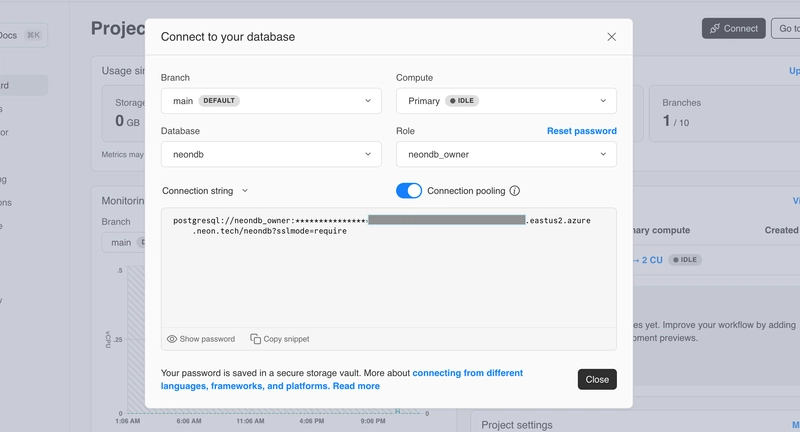
Managing the infrastructure to host and execute backend code requires you to size, provision, and scale several servers, apply security patches, and then manage operating system updates and infrastructure for performance and availability.
Wouldn't it be great if you could build out your application without spending time managing servers? That's the whole idea behind serverless architecture.
This article will guide you through the essential tools for adopting serverless architecture, offering a practical roadmap to get started. It aims to demystify the serverless ecosystem and highlight key technologies.
What Does Serverless Really Mean?
One of the most common misconceptions in the industry is that going serverless means eliminating servers entirely. In contrast, it just means removing them from the developer’s perspective. At the end, there is a server running your application code. Serverless just means that you don’t operate them. The cloud providers (e.g., AWS Lambda and Azure Functions) handle the infrastructure, allowing you to focus on your code.
Think of ordering food from your favorite restaurants. You have great food without needing to shop, cook, or clean. Serverless computing is pretty much the same: you run your code without managing the servers.
As your application grows and gains many users worldwide, processing data becomes complex and demands scaling. This will require handling downtime, reducing latency, and managing servers, which results in additional costs and resources. By adopting serverless architecture, larger applications can run faster with lower costs and resources.
Serverless architecture is well-suited for web and mobile applications with different workloads. Examples are real-time data processing apps like chat apps, backend for frontend services (BFF) apps like e-commerce apps, ****automation and scheduled tasks apps like task manager apps, and more.
Key Benefits of Serverless Architecture
There are many other reasons why going serverless is a good design choice over managing your servers yourself. Here are the most essential ones:
- Cost-Effectiveness: Serverless architecture uses a pay-as-you-go model; you pay only for what you use. This method can significantly reduce operational expenses, which is great for developers with strict budgets.
- Lower DevOps Requirements: Developers or businesses using serverless platforms do not need to spend on hiring and training DevOps resources, as server operations are managed for them. Instead, it allows the engineering team to focus on application development.
- High Availability: Serverless platforms generally offer high availability by distributing functions across multiple data centers or regions. This built-in redundancy enhances application reliability and reduces the risk of downtime.
- Scalability: Serverless solutions scale up and down automatically, responding to changing workloads without manual provisioning. This allows you to quickly increase your resources anytime without being concerned about the server's capacity as it scales. ## Top Serverless Tools for Compute, Storage, and Databases
This section will discuss the top serverless tools that will give you an edge while getting started with serverless architecture. It will be divided into serverless compute tools and serverless databases.
Serverless compute tools
Here are the top serverless cloud providers. While each platform has distinct features and advantages, they allow developers to focus on writing code rather than managing servers.
-
AWS Lambda
AWS Lambda is a compute service that runs your backend code in response to events such as object uploads and HTTP requests.
It automatically handles all the capacity, patching, scaling, and administration of the infrastructure to run your AWS Lambda functions.
Lambda also provides visibility and performance and automatically manages the computing resources, making it easy to build applications that respond quickly to new information.
Like other serverless providers, Lambda as a service doesn't come with built-in storage.
Lambda functions are stateless; each invocation is considered a clean slate.
Nevertheless, Lambda functions can work with additional services that provide storage.
Common examples include S3 (Simple Storage Service), EFS (Elastic File System), and databases like RDS, Neon, and DynamoDB.Use Case
AWS Lambda is perfect for applications that process images due to its integration with AWS S3, an object storage service. A good example is an e-commerce application that renders images in different sizes.
Here are the top features:- Monitoring and Logging: Lambda integrates with Amazon CloudWatch for monitoring and logging, providing insights into function performance and errors.
- Multi-language Support: AWS Lambda supports multiple programming languages.
-
Azure Functions
Azure Functions is a function-as-a-service in Microsoft Azure that runs small pieces of code or "functions" in the cloud.
Functions are executed by a trigger (an action that invokes the code).
Azure Functions is an extension of the Azure App Service.
Azure Functions focus on event-driven scenarios and provide on-demand compute resources required for your applications.
You can use Azure Functions to build web APIs, respond to database changes, process IoT streams, manage messaging queues, and more.Use Case
Azure Functions integrates with most tools in the Microsoft ecosystem, including Azure Queue (adding messages to a queue) and SignalR (sending real-time updates). This makes Azure Functions the perfect choice for real-time applications like chat apps.
Here are the top features:- It supports multiple languages, including C#, Java, Python, PowerShell, and TypeScript, and it can extend its language support to languages such as Go.
- Microsoft Azure offers single-pane operations, a powerful feature that provides a unified view of hybrid environments via the Operation Management Suite (OMS), a Management-as-a-Service (MaaS).
- It allows monitoring and management of various data sources, including storage, virtual network services, machines, logs, and insights.
- Flexible development with integrations with GitHub and Azure DevOps.
- The entire SDK for functions is open-source.
-
Google Cloud Functions
Google Cloud Functions is a scalable serverless execution environment for building and connecting cloud services.
It provides triggers automatically, with out-of-the-box support for HTTP and event-driven triggers from GCP services.
There are two types of Google Cloud Functions: API cloud functions and event-driven cloud functions.
The API cloud functions are invoked from standard HTTP requests, while the events-driven cloud functions handle events from the cloud infrastructure.
The event driver provides you with a trigger, which is stored in the data, and then sends you a response according to your function.Use Case
Out of all the tools in this list, Google Cloud Functions is the best for image analysis.
While AWS Lambda is good for processing images, Google Cloud Functions is the perfect choice for applications that require image analysis because of its integration with Google Cloud Vision API.
It is excellent for building social media applications and applications with face recognition.
Here are its key features:- Allows configuration of functions based on the application's need, enabling trigger-based execution, memory and CPU allocation, and scaling controls.
- Allows configuring an instance to complete multiple concurrent requests.
- Automatic provisioning of resources.
- Simplified and intuitive developer experience.
-
Cloudflare Workers
Cloudflare Workers is a serverless computing platform that allows users to create or augment existing serverless applications.
Unlike most serverless platforms, it requires little configuration and no region selection, enabling users to deploy applications anywhere on Earth.Use Case
It’s best for geo-location content delivery applications because of its low latency and edge network spread around the globe.
Examples are live streaming apps, online games, product apps that show products and currency based on the users' location, and so on.
Here are the key features:- It is fast and runs on lightweight V8 isolates.
- Easy deployments with just a little configuration.
- High-performance global network.
- Cloudflare Workers use the same network that runs Cloudflare content delivery network, load balancing, web application firewall, and more, leading to faster performance.
Serverless databases
Here are the top serverless databases with their key features and use cases:
-
Neon
Neon is a serverless Postgres database that scales up and down based on your application workload by separating storage and computing.
When you develop your app, you don’t need to worry about the cost of using it.
Neon scales to zero when the database is not in use.
When you deploy your app to production, you don’t need to worry about the capacity of your database; Neon automatically scales to the demands of your workload.
It’s the perfect database for working with serverless architecture.
Neon applications can be deployed traditionally and connected over TCP using any Postgres driver.
However, more teams are leveraging edge deployment in environments where they can’t establish a direct TCP connection, such as Cloudflare workers, AWS Lambda, and Vercel Edge functions.
Neon provides a low-latency serverless driver for such deployments, working over both WebSockets and HTTP for efficient real-time and request-based interactions.Use Cases
Neon is best for building modern, data-driven, and SaaS applications. An example is a subscription-based analytics app with real-time customer insights for different businesses.
Here are the key features:- Provides database read replica, a feature that allows replicating databases, enabling you to provide read-only access without duplicating data.
- Provides API and CLI tools for database management.
- It’s cost-efficient, as your costs are directly tied to the resources your workload consumes—you don't pay for idle capacity.
- Integrates with any language or framework and supports over 70 Postgres extensions.
- Neon uses PgBouncer for connection pooling.
-
Firebase
Firebase is a serverless app development platform based on Google Cloud.
It integrates with several other Google products, such as analytics, and provides client-side SDKs for building iOS, Android, and web applications.
Firebase offers Cloud Functions edge deployments, enabling the serverless execution of backend code in response to events triggered by HTTPS requests.
This allows you to build responsive and scalable applications without managing servers.Use Cases
Firebase is great for building real-time applications that work with media content like images, videos, and audio. Examples are social media applications and e-commerce apps that have real-time customer support.
Here are its key features:- Offers fast and secure static web hosting with global CDN delivery.
- Provides out-of-the-box authentication with support for multiple providers like Google, Facebook, and email with password.
- It comes with Firestore and Realtime Database. These are scalable NoSQL databases for storing data and building interactive applications.
Building A Simple Serverless API
To fully understand serverless architecture, let’s build a simple application to see how it works. This section will walk you through a step-by-step guide to building a simple serverless API using Cloudflare Workers and Neon, a serverless Postgres database.
Getting Started
First, create an account at neon.tech. Once you have an account, click Create a new project and name it serverless_api.
Next, click on Dashboard → Connect, then copy the connection string. Keep it safe because you will need it to connect with Cloudflare Workers.
Create a Cloudflare Worker
Sign up on Cloudflare. In the sidebar, click Compute (Workers) → Workers & Pages → Create.
Name your Worker, serverless-api, and click Deploy.
Once the Worker is deployed, you will be directed to the Worker editor page, where you can write your Worker code directly in the browser. In a real application, you would write the logic to query your Neon database. However, the API will return a simple “Hello Serverless World” text for this application.
Connect Cloudflare Worker with Neon
On the sidebar, click Compute (Workers) → Workers & Pages → Integrations, then select Neon and click Add Integration.
Follow the prompt. You will be asked to authorize Neon and select the project, branch, and database. Cloudflare will automatically show your Neon connection string. Compare it with the one you have retrieved from Neon to confirm.
These Secrets will be added to the existing Environment Variables of this Worker.
Once that is done, Cloudflare will provide an endpoint that you can fetch in frontend code, similar to this:
https://serverless-api..workers.dev/
You can also test the serverless function in the preview browser on the Cloudflare console.
In the Worker.js file, paste the following code:
export default {
async fetch(request, env, ctx) {
console.log(env)
return new Response('Hello Severless World!');
},
};
This will return a simple Hello World and log the Neon connection string in the console to show that the database was successfully connected.
You may ask why a serverless API is needed when you could query the database directly. Well, the answer is simple: as soon as the application begins to grow, there will be lots of users calling that API (function). However, since the serverless provider automatically handles scalability, your server will be able to handle the change in workload without crashing. If you want a more extensive tutorial on building a serverless application with Cloudflare Workers and Neon, check this tutorial.
Wrapping Up
Serverless computing offers a powerful approach to building modern applications, enabling automatic scaling, low cost, and faster response time. By using the right tools, such as AWS Lambda, Google Cloud Functions, Cloudflare Workers, and Neon for databases, you can simplify development while reducing infrastructure complexity.
Curious about Neon’s capabilities? Sign up today and experience hassle-free, serverless PostgreSQL!









































































































































































![[The AI Show Episode 142]: ChatGPT’s New Image Generator, Studio Ghibli Craze and Backlash, Gemini 2.5, OpenAI Academy, 4o Updates, Vibe Marketing & xAI Acquires X](https://www.marketingaiinstitute.com/hubfs/ep%20142%20cover.png)



























































































































![[FREE EBOOKS] The Kubernetes Bible, The Ultimate Linux Shell Scripting Guide & Four More Best Selling Titles](https://www.javacodegeeks.com/wp-content/uploads/2012/12/jcg-logo.jpg)



![From drop-out to software architect with Jason Lengstorf [Podcast #167]](https://cdn.hashnode.com/res/hashnode/image/upload/v1743796461357/f3d19cd7-e6f5-4d7c-8bfc-eb974bc8da68.png?#)






































































































.png?#)




.jpg?#)
































_Christophe_Coat_Alamy.jpg?#)








































































































![Rapidus in Talks With Apple as It Accelerates Toward 2nm Chip Production [Report]](https://www.iclarified.com/images/news/96937/96937/96937-640.jpg)





































































































































